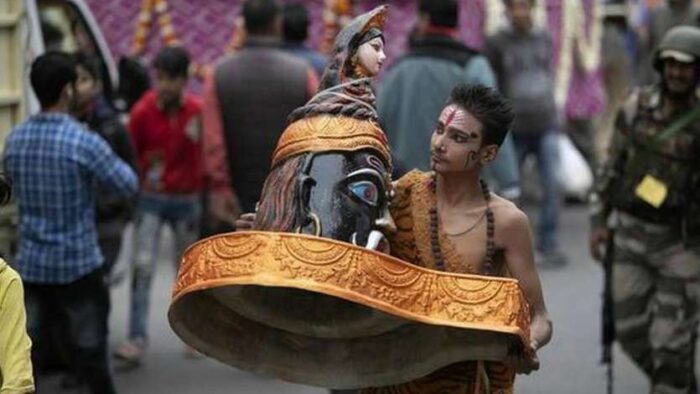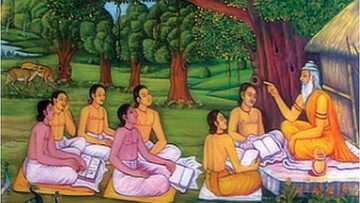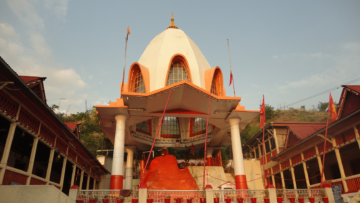The Supreme Night of Shiva – MahaShivratri is one of the most significant events in India’s spiritual calendar.
Shaivites see Shiva as a Ubiquitous Reality – Universal Consciousness, the Ultimate truth, Infinite Love and last, but not the least as the Destroyer – one who ends the old cycle of time in order to pave way for new creation. Lord Shiva’s influence on everyone is idiosyncratic and so are the ways of celebrating his greatness. The grihasthas observe MahaShivratri as the auspicious day of Shiva-Parvati’s divine union, while the laukikas view it as the day when Shiva conquered all his enemies. For the ascetics, it is the day when he melds with Kailash in absolute stillness.
Shivratri usually falls on the fourteenth day of every lunar month; basically a day before the new moon is observed as Shivratri. MahaShivratri falls between February and March among the twelve Shivratris of a calendar year and carries the most spiritual significance. This is the day when nature is pushing one towards one’s spiritual peak. In order to have the most of these natural upsurges of energies, one of the fundamentals of this nightlong festival is to ensure that you remain awake throughout the night mostly in a yogic pose.
There are many narratives as to the origin of MahaShivratri. Some legends attribute it to the night when Shiva performs the cosmic dance of Shristi – creation, Stithi – preservation or sustenance and Samhara – destruction or dissolution while others accredit it to the night when Shiva and Parvati were united in holy matrimony while some epics memorialize the MahaShivratri festivities to the day when the omnipotent Shiva saved the world by consuming the Halahala vish – the deadly poison, one of the elements liberated during Samudra-Manthan – the great churning of the ocean, a joint undertaking of the Suras (the Gods) and Asuras (Demons), in order to obtain Amrit – the nectar of immortality (the philosophical essence of the above myth is as follows: Gods and demons symbolize all kinds of individuals, both good and bad, in the world. The Ocean of Milk represents the ideal world that is full of peace and happiness for all human beings. Churning the Ocean of Milk signifies the human activity in the world. The amrita symbolizes happiness and the poison represents human greed and selfishness. Shiva symbolizes the atman (self), the spiritual essence of an individual.), and there are many more such chronicles.
According to the Kashmiri lore, Herath commemorates the manifestation of the great Jwala Linga or the pillar of light, which appeared on triyodashi, a day before MahaShivratri day. The story goes like this – Goddess Parvati along with the yoginis was meditating in the forest. Meanwhile Lord Shiva, who was searching for his divine consort Shakti, appeared in the form of a Flaming Linga, at Pradosh Kaal or the dusk of the early night in the form of a Swacchand Bhairava – a fearsome form of Shiv. This frightened the yoginis who started running helter-skelter. In order to take control of the situation, Mata Parvati created Vatuka Bhairava and Rama Bhairava, her mind-born sons, to pacify the Lord who subsequently disappeared. After a moment of tranquil, Swacchand Bhairava appeared again as a dazzling column of fire or the Jwala Linga. Vatuka and Rama approached it to locate its emergence and termination, but were unsuccessful. They began to sing praises of Lord Shiva and went to Mata Parvati. Unable to comprehend the illustriousness of Shiva, Vatuka and Rama and the yoginis merged with Goddess Parvati who in turn merged with the Jwala Linga. She then blessed both the Bhairavas – Vatuka and Ramana that they would be worshipped by human beings and would receive their share of sacrificial offerings on that day and those who would worship them would have all their wishes fulfilled. MahaShivratri festival is celebrated across Bharat and other countries like Nepal on Chaturdashi – the fourteenth day of the Krishna Paksha of the month of Phalgun (February/March), but in Kashmiri it is celebrated a day earlier, i.e., trayodashi, the thirteenth day of Krishna Paksha of the month of Phalgun. In fact, to be more precise, it is a fortnight-long fiesta pinnacling on trayodashi, the day of appearance of the Jwala Linga.
The 9th century Kashmiri saint-poet Utpaldeva describing Shiva-ratri wrote, “When the sun, the moon and all the other stars set at the same time, there arises the radiant night of Shiva spreading a splendor of its own.”
No amount of exposition about the customs, rituals, traditions and practices prevalent in the Kashmiri Pandit Community is complete without the mention of MahaShivratri, better known as Herath, coined from the original word Hararatri – The Night of ‘Hara’, another name for ‘Shiva.’ Herath is in fact the paramount festival of this community.
The commencement, progression and culmination of Herath unfolds in the following way:
- Hur okdoh – The festivities begin with Hur okdoh – the first day of the dark phase of moon in the month of Phalgun. Usually the first week from Hur okdoh to Hur Shiyam (first day to sixth day) is usually dedicated to cleaning and prepping the house for the upcoming festivities. This includes collecting the items necessary for the main pooja.
- Hur Atham – The eighth day or Hur Atham is dedicated to Goddess Ma Sharika, the presiding deity of the valley, believed to be an incarnation of Goddess Durga.
- Dyara Daham – The tenth day is devoted to goddess Laxmi. On this day, the married women visit their parent’s home and return with cash – Atagat and other gifts for their in-laws as an expression of their love and respect, and Kangri, the fire pot with a silver tsalan around it, which is symbolic of good luck and prosperity.
- Gadkah – Usually a special meal of fish and rice is enjoyed by the extended family as a prelude to the big day and an offering to the Bhairava.
- Vagarye Bah – The twelfth day represents the first formal pooja of Shivratri. An earthenware pitcher, called Vagarye, symbolic representation of a priest or a messenger is respectfully placed on grass mats or asanas. This priest/messenger supposedly brings the good news that Shiva and Parvati will be visiting them the following day.
Herath Truvah – Herath Truvah or the thirteenth day is the day which marks the zenith of all celebrations. This is the day of main pooja. It is important to mention that until the migration in the 1990s, the whole Kashmiri Pandit community usually lived in a joint family system. It was not unusual to find a single household consisting of as many as 20 to 30 members and some even more. The eldest member of the family would keep fast. This day symbolizes the wedding of Shiva and Parvati and it is believed that the Bhairavas and other Ganas accompany Shiva. Special dishes are prepared for them in order to please them. This is what constitutes the vatuk pooja, better known as Vatuk Pooza in local parlance.
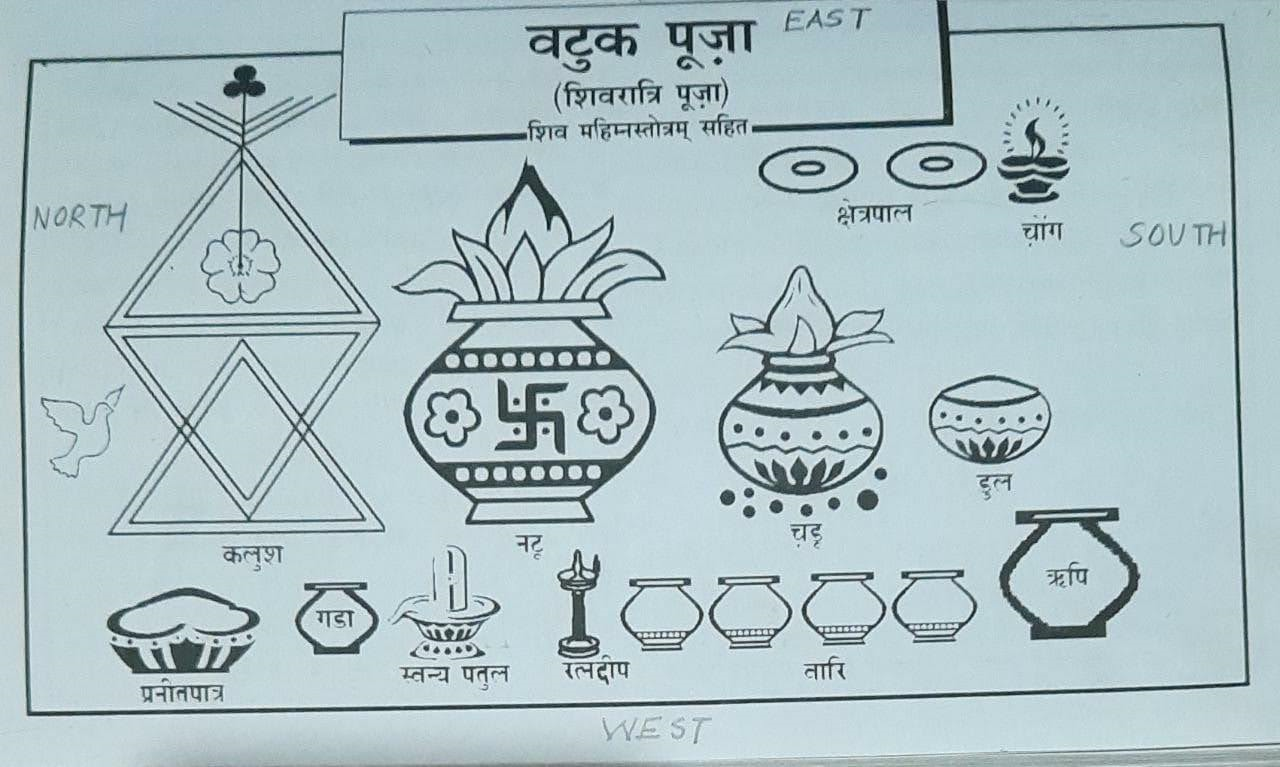
(Picture courtesy: Vijayeshwar Janthri)
The picture above depicts the layout of the Vatuk Pooza. The Pooza begins with Kalasha Sthapana or placing of the Kalasha. The area is cleaned thoroughly and prepped using lime and Kalasha is placed in the area designated by the flower in the picture. Next No’t representing Lord Shiva and Chou’d representing Mata Parvati are placed. Saniwaer, dul (for placing food for Bhairavas), So’nni Potul, Dooph’zuur or Ratandeep, and Hrishdul (for placing food for the Hrishis) are placed in the order designated in the figure above. Nariwan and garlands are tied around these articles. The Kalasha, No’t, Chou’d, Saniwaer are filled with doon or walnuts (every family has pre-decided number of walnuts to be placed, but usually it is not less than 51 for the No’t.) Other items that go in are milk, curd, Kand (crystalline sugar in the shape of Shiva Linga), rice, flowers etc. Now an elaborate Vatuk Pooza is undertaken under the auspices of a Kul purohit or family priest, whereby Shiva and Parvati are united in holy matrimony. Of note, since migration, many audio cassettes and later online audio links containing instructions on rituals along with mantras are available to enable the new age Kashmiri Pandits settled in different places to stay close to their culture without compromise. After the Pooza, The Bhairavas are fed their choicest delicacies, usually consisting of meat and fish accompanied with rice, another ritual very specific to the Hindus of Kashmir. The family then sits down together and enjoys the meals.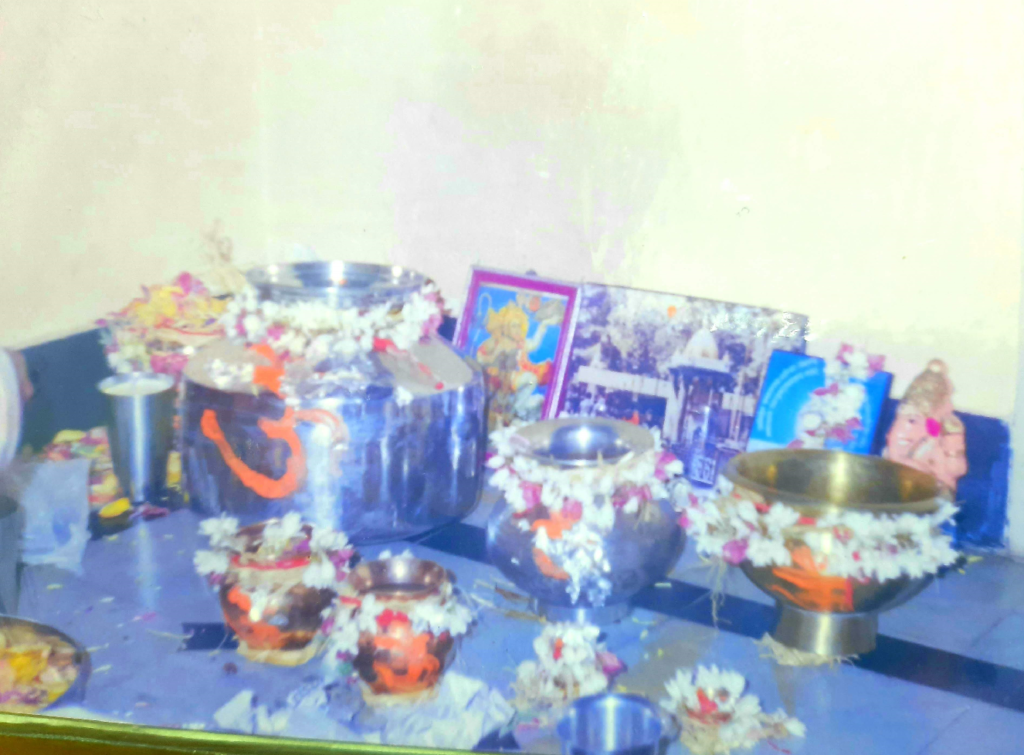
(Actual Vatuk Pooza Arrangement)
- Salaam is celebrated the next day on Shiva Chaturdashi. In the morning, pooza is offered to the Vatuk and naivaidyam of tomul tchot – rice pancakes with walnut is served. This happens to be the favourite day of the children and adults alike, as they get Herath Kharch – ‘pocket money’ for their merriment and indulgence. A peculiar name “Salaam” (Persian greeting) is assigned to this day, possibly since on this day the Muslim friends and neighbours would visit their Pandit friends and wish them joy, cheer and delight. Ironically this also depicts the times when perhaps plurality and humanism coexisted in Kashmir. The Hindu women and men alike, wore new clothes, the families and friends spent time together and there was happiness galore admixed in the air. People would smile for no reason and wished each other as they would move around.
- Dooni-mavas or walnut (doon) amavas is the fifteen day of the festival. On this day, Shiva and Parvati supposedly return back to the Himalayas. The walnuts are taken out of the No’t and distributed among the family and friends.
- Teel Ashtami. This marks the grand finale of the great festival. People gather all the items of worship and immerse them into the river or a water body on Krishna-ashtami or Teel Ashtami. In the evening, a glowing lamp is placed on the threshold of the house and this coincides with the end of the winter and marks the arrival of Basant or spring.
The beautiful interweaving of our lives, rituals, customs, traditions, and festivals with the seasonal cycle is noteworthy. Earlier it was mentioned that the festivities last a fortnight, but in reality Shivratri from its outset to conclusion is a conviviality lasting 23 days. Imagine the 23 days of gaiety, celebrations and the Kashmiri pandits chanting their favourite mahimnapar strotam:
कर्पूरगौरं करुणावतारं संसारसारं भुजगेन्द्रहारम्।
सदा बसन्तं हृदयारबिन्दे भबं भवानीसहितं नमामि
Meaning,
O’ one with the complexion as bright and divine as a lighted camphor, embodiment of compassion, quintessence of all worldly existence, adorning the venous snakes as ornaments, I bow down to the lotus feet of my Lord Shiva and Mata Bhavani who dwell in the inner kernels of my heart.
The turbulent times of 1990 threw the Kashmiri Pandits out of their beloved land but could never uproot them from their traditions, customs and more importantly their way of life. Even today they are easily recognized in any part of the world. The spirit of Shiva lives in them wherever they are and I would like to end this piece with an anecdote repeatedly narrated, year by year, by the elders to the youngsters of the community that goes as follows: During the Afghan rule, Jabbar Khan, the governor forbade the Pandits against celebrating Herath on the designated date of triyodashi of the dark phase of moon of the month of Phalguna because someone told Jabbar Khan that the Pandits believed that it was imperative to snow on the night of Herath. Instead he suggested that they should celebrate Herath in June, which is summer. But as divinity would have it, due to the amalgamation of extraordinary forces of nature, not only did the snow descended from the heavenly sky but also formed a thick white sheet on the ground on this night too. The Hindus of Kashmiri believed that their supreme deity, the benevolent Lord Shiva or Hara made the impossible possible and blessed them with his mercy. The rhymesters soon got to work and created a new song, “Wuchton yih Jabbar, jandah, Haras tih karun wanda” (“Look at Jabbar, the wretch, even Har he turned into winter!”) It is interesting to note that the Afghan rule in Kashmir soon came to an end after this!!
तोहय सारनिय छु शिवरात्री पोष्त
(Wish you all abundance on Shivaratri)
References:
1. shehjar.com
2. koausa.org/site/
Featured Image Credits: patrika.com
Disclaimer: The opinions expressed in this article belong to the author. Indic Today is neither responsible nor liable for the accuracy, completeness, suitability, or validity of any information in the article.

